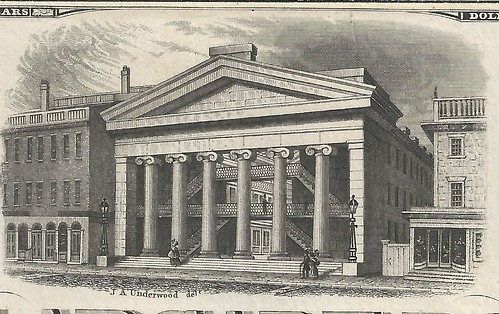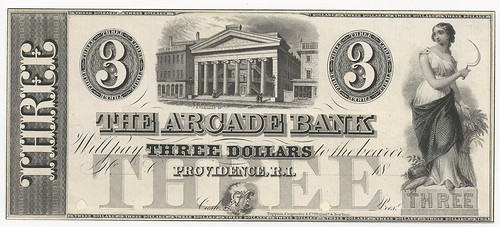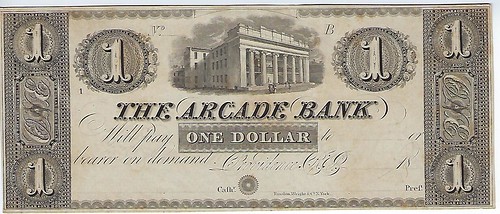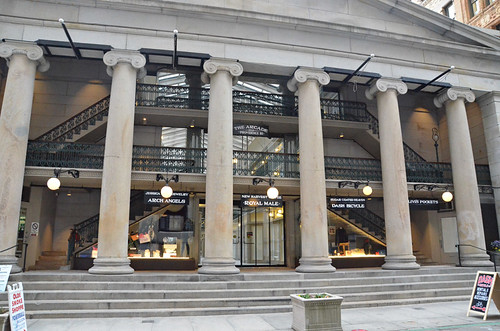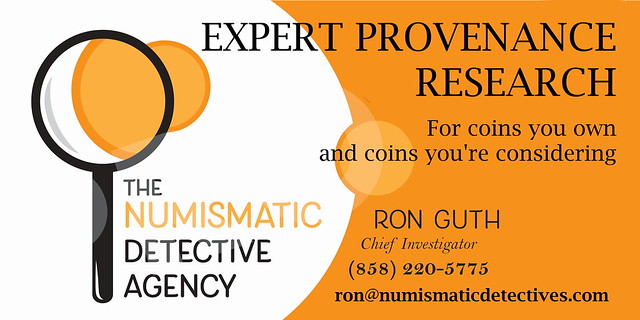
PREV ARTICLE
NEXT ARTICLE
FULL ISSUE
PREV FULL ISSUE
AMERICA'S FIRST SHOPPING MALL ON PAPER MONEYThe New England Numismatic Association's official publication is NENA News. John Ferreri offered to share some articles with E-Sylum readers. Last week we republished John's own article on the Elm City Bank of New Haven. Here's another one of these, this time on the first shopping mall in America and its appearance on paper money. John kindly provided image files. Thanks! -Editor America's First Shopping Mall: The Arcade Building, Providence, RI This new and exciting shopping mall was the center vignette of at least two different Rhode Island State Bank Notes. Circa 1850. Did your Great-Great-Great-Grandmother shop here? If she lived in the Providence, R.I. area during the mid-1800s and was able to drive her horse and buggy to shop downtown she might have visited this new and exciting type of retail business place, a mall! The Westminster Arcade Building was built in 1828, primarily of granite and housed three levels of mercantile businesses. The building helped revitalize a neglected part of downtown Providence during the mid-1800s. The building has endured close to two centuries of use, many internal renovations and is still in use, today. Great Granny could have shopped here for millinery goods, fresh foods, East India goods and perhaps furniture. The Arcade Bank opened in this building in 1831 and remained here until it became a national bank in 1865. Great-Great-Great Granny could easily have spent money issued by this bank. It would be decades before federally issued paper money replaced the issues of state chartered banks. This image of the $3 note of the Arcade Bank shows the Westminster Street entrance to the Arcade building which was designed by James C. Bucklin. The note lacks signatures because it is a proof impression struck for inspection by the bank board of directors and not meant for issue. The building was built between Westminster and Weybosset Streets and after trying to decide which architectural rendering to choose for the two entrances it was decided to use both, one at the Westminster Street entrance and the other at the Weybosset Street entrance. The Weybosset Street entrance was designed by Russell W. Warren and while obviously different, is still in keeping with Greek Revival Architecture. Thanks to this bank and many others, scenes of local structures and neighborhoods have been preserved on the issues of their paper currency. This modern image of the Arcade Building after its latest renovation shows a mall with retail businesses on the ground floor and micro-apartment space on the two upper floors. This type of apartment has become popular for people wanting to live in downtown areas with a minimum of floor space. This building has now been operating for almost 200 years without major exterior renovation. John adds: "This story brings back memories. When I was in college I often took the train from Boston to Providence where I connected with a bus to my home town of Willimantic, Connecticut. The Arcade building was a short walk from both the bus and train station. I recall that the area with the Arcade was somewhat derelict, and much like the Faneuil Hall / Quincy Market area in Boston. Both areas have been cleaned up now and are popular tourist spots!"
For more information on the New England Numismatic Association, see:
To read the earlier E-Sylum article, see:
Wayne Homren, Editor The Numismatic Bibliomania Society is a non-profit organization promoting numismatic literature. See our web site at coinbooks.org. To submit items for publication in The E-Sylum, write to the Editor at this address: whomren@gmail.com To subscribe go to: https://my.binhost.com/lists/listinfo/esylum All Rights Reserved. NBS Home Page Contact the NBS webmaster 
|
